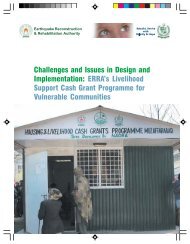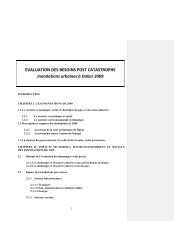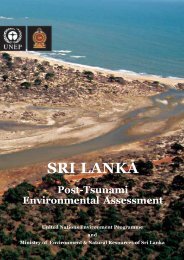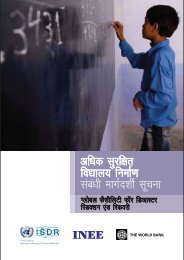The Maldives
The Maldives
The Maldives
You also want an ePaper? Increase the reach of your titles
YUMPU automatically turns print PDFs into web optimized ePapers that Google loves.
Prior to the tsunami, the <strong>Maldives</strong> benefited from twenty-five years of<br />
economic growth that resulted in a per capita income in excess of US$<br />
2,100—compared to an average of around US$ 500 per capita for the<br />
rest of South Asia. Much of the growth was due to the emergence of the<br />
<strong>Maldives</strong> as a major tourist destination, attracting upwards of 500,000<br />
visitors annually. Direct revenues earned from the sector contributed<br />
directly to a third of GDP, and its wider impact accounted for more<br />
than 70 percent of GDP. Hence, given the hit the tourist industry took<br />
following the disaster, it is no wonder that the Maldivian economy has<br />
suffered over the last year, and is likely to continue to suffer into the next<br />
year. It is expected to contract by three percent in 2005 compared to a<br />
positive growth rate of seven percent in 2004.<br />
Fishing and Agriculture<br />
<strong>The</strong> fisheries sector (fishing and fish processing) is the country’s second<br />
largest industry, contributing roughly nine percent to GDP in 2004, and<br />
has continued to grow since the tsunami. Fishing employed about 11<br />
percent of the labour force, prior to the tsunami, while about 20 percent<br />
of the total population was dependent on the industry for their primary<br />
income. <strong>The</strong> growth since the tsunami can be attributed to the increasingly<br />
sophisticated technology and boats used by the industry. However, the<br />
overall, health of this sector of the economy masks negative social impacts<br />
in local communities, due to loss and damage and equipment.<br />
Direct losses in the fisheries sector on reports received from islands were<br />
estimated at US$ 13.13 million and indirect losses at US$ 23.61 million.<br />
This covered loss of income and livelihoods of fishers and cottage-based<br />
processors. However, after more detailed assessment, which included IDP<br />
communities, carried out in September with assistance from the Food and<br />
Agriculture Organisation (FAO), direct losses were estimated at US$ 24.75<br />
million. Additionally, the research, demonstration, and training facilities of<br />
the Ministry of Fisheries, Agriculture, and Marine Resources (MOFAMR)<br />
were partially damaged, further undermining the planned programmes<br />
for 2005.<br />
About half of all cultivated land on the inhabited islands was destroyed by<br />
the intrusion of salt water intrusion, with agricultural losses estimated at<br />
US$ 6.46 million. Apart from the fields, perennial trees such as coconuts,<br />
breadfruits, mango, betel leaf, guava, and water apple were uprooted by<br />
the waves or died from salt toxicity. Banana was also severely damaged<br />
given its susceptibility to salt stress. On more than half the island the<br />
ground water aquifer has been seriously affected by salt water intrusion,<br />
and on still others the water quality has deteriorated. Destruction of port<br />
infrastructure and transport vessels also adversely affected farm incomes<br />
and rural livelihoods.<br />
<strong>The</strong> period following the tsunami would have been the peak tourist season;<br />
and even those farmers whose crops were not affected by the tsunami<br />
nonetheless faced losses due to the severely reduced number island visitors.<br />
This remains of particular concern since the tourism industry only recently<br />
began sourcing supplies from local producers, and the linkage between<br />
domestic agriculture and the tourism sector is still tenuous.<br />
THE MALDIVES ONE YEAR AFTER THE TSUNAMI | 25





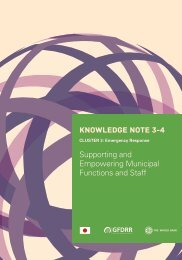
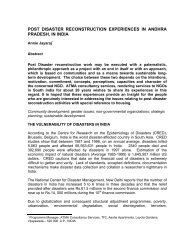
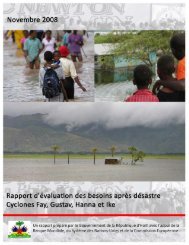
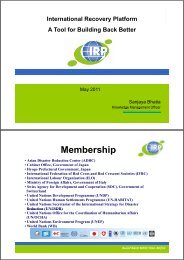
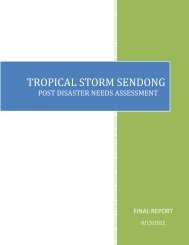
![View full document [PDF 7.65 MB] - unisdr](https://img.yumpu.com/48902806/1/178x260/view-full-document-pdf-765-mb-unisdr.jpg?quality=85)
